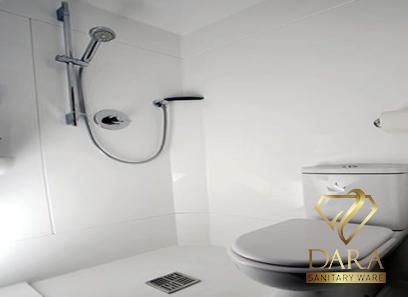Sanitary ware refers to a comprehensive range of bathroom fixtures and accessories, including toilets, sinks, bathtubs, showers, faucets, and more. This essential part of modern living has witnessed a remarkable growth in recent times due to factors such as rising urbanization, increasing disposable income, and a growing focus on hygiene and wellness. In this article, we will delve into the thriving market of sanitary ware and explore the promising opportunities that await businesses in this industry. Market Overview: The global sanitary ware market has been experiencing robust growth over the past decade. According to a recent report by Grand View Research, the market size was valued at USD 39.4 billion in 2020 and is expected to reach USD 64.5 billion by 2028, with a compound annual growth rate (CAGR) of 6.1% from 2021 to 2028. Key Factors Driving Market Growth: 1. Urbanization and infrastructure development: Rapid urbanization, especially in emerging economies, has led to increased construction activities and the need for modern sanitation facilities. This has created a significant demand for sanitary ware products in residential, commercial, and industrial sectors.

.
 2. Rising disposable income and changing lifestyles: As incomes rise, individuals are willing to spend more on enhancing their living spaces, bathrooms included. Moreover, changing lifestyles and a greater emphasis on personal hygiene have propelled the demand for advanced and hygienic sanitary ware products. 3. Technological advancements: The integration of advanced technologies, such as touchless sensors, smart controls, and water-saving mechanisms, has revolutionized the sanitary ware industry. These innovations not only improve convenience but also contribute to water conservation, an aspect gaining global attention. 4. Growing awareness of sustainability: With increasing environmental concerns, consumers are becoming more conscious of their choices. This has paved the way for eco-friendly sanitary ware products, made from recycled materials and designed to minimize water wastage.
2. Rising disposable income and changing lifestyles: As incomes rise, individuals are willing to spend more on enhancing their living spaces, bathrooms included. Moreover, changing lifestyles and a greater emphasis on personal hygiene have propelled the demand for advanced and hygienic sanitary ware products. 3. Technological advancements: The integration of advanced technologies, such as touchless sensors, smart controls, and water-saving mechanisms, has revolutionized the sanitary ware industry. These innovations not only improve convenience but also contribute to water conservation, an aspect gaining global attention. 4. Growing awareness of sustainability: With increasing environmental concerns, consumers are becoming more conscious of their choices. This has paved the way for eco-friendly sanitary ware products, made from recycled materials and designed to minimize water wastage.
..
 Opportunities for Businesses: 1. New product development: There is a constant need for innovative and aesthetically pleasing sanitary ware products. Businesses can seize this opportunity by investing in research and development to create new designs, improve water-saving features, and incorporate smart technologies. 2. Market expansion: With emerging markets witnessing exponential growth, businesses can consider expanding their geographical presence to tap into untapped markets. Developing economies with growing disposable incomes and improving infrastructure are particularly attractive for entry. 3. E-commerce and digital marketing: The increasing penetration of the internet and smartphones has led to a surge in online retail. Embracing e-commerce and digital marketing strategies can help businesses reach a wider customer base and achieve faster growth.
Opportunities for Businesses: 1. New product development: There is a constant need for innovative and aesthetically pleasing sanitary ware products. Businesses can seize this opportunity by investing in research and development to create new designs, improve water-saving features, and incorporate smart technologies. 2. Market expansion: With emerging markets witnessing exponential growth, businesses can consider expanding their geographical presence to tap into untapped markets. Developing economies with growing disposable incomes and improving infrastructure are particularly attractive for entry. 3. E-commerce and digital marketing: The increasing penetration of the internet and smartphones has led to a surge in online retail. Embracing e-commerce and digital marketing strategies can help businesses reach a wider customer base and achieve faster growth.
…
 4. Sustainability focus: By prioritizing sustainability in product offerings and manufacturing processes, businesses can align themselves with the evolving consumer preferences. Promoting eco-friendly practices can portray the brand as environmentally responsible, attracting environmentally conscious consumers. Conclusion: The sanitary ware industry is experiencing significant growth, driven by various factors such as urbanization, rising incomes, technological advancements, and sustainability concerns. Businesses that can adapt to changing market dynamics, develop innovative products, expand into new markets, and prioritize sustainability will undoubtedly thrive in this lucrative sector. As the global demand for sanitary ware continues to grow, it is crucial for businesses to leverage these opportunities and establish a strong presence in the market.
4. Sustainability focus: By prioritizing sustainability in product offerings and manufacturing processes, businesses can align themselves with the evolving consumer preferences. Promoting eco-friendly practices can portray the brand as environmentally responsible, attracting environmentally conscious consumers. Conclusion: The sanitary ware industry is experiencing significant growth, driven by various factors such as urbanization, rising incomes, technological advancements, and sustainability concerns. Businesses that can adapt to changing market dynamics, develop innovative products, expand into new markets, and prioritize sustainability will undoubtedly thrive in this lucrative sector. As the global demand for sanitary ware continues to grow, it is crucial for businesses to leverage these opportunities and establish a strong presence in the market.










Your comment submitted.